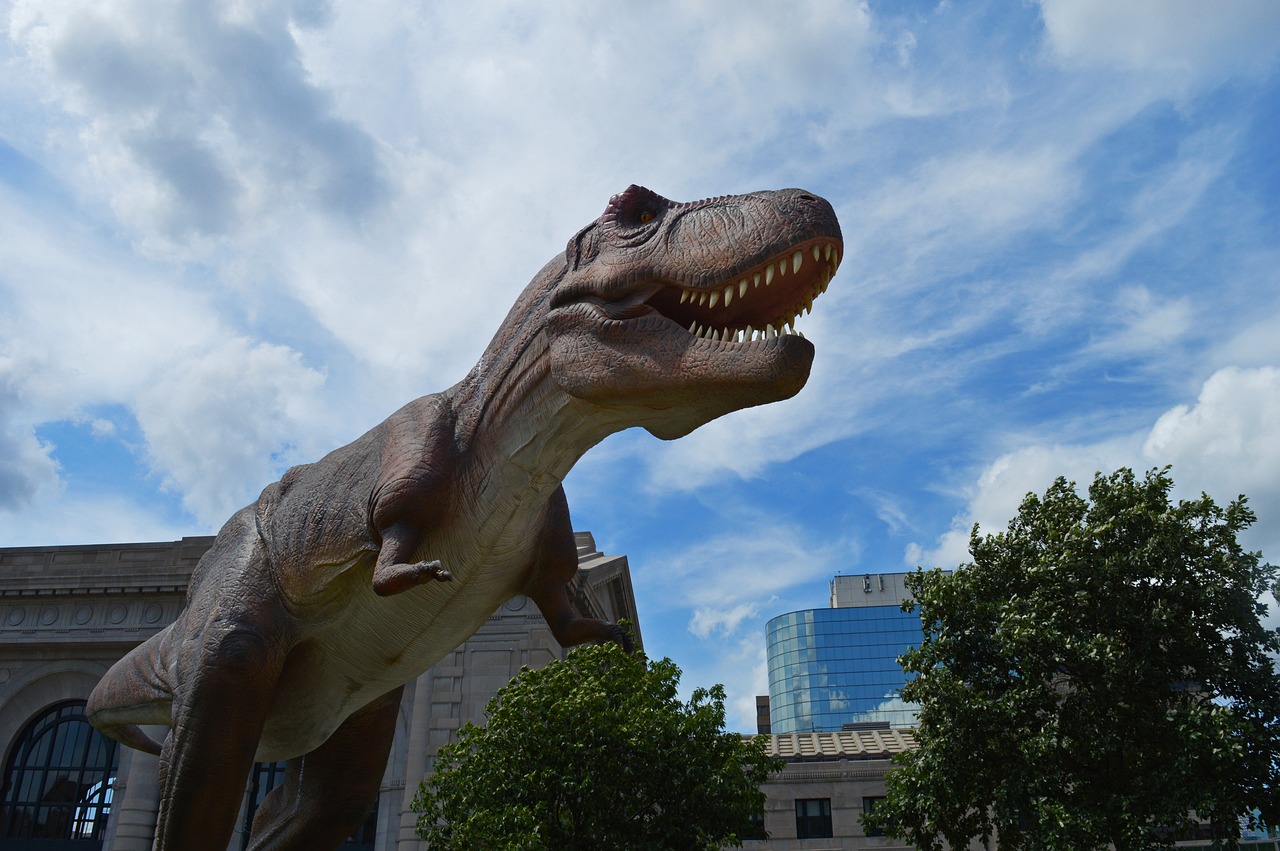Picture this: deep in the Amazon rainforest, something massive crashes through the canopy above. But when scientists arrive to investigate, they find nothing but broken branches and mysterious footprints that shouldn’t exist. The 2012 film “The Dinosaur Project” presented a tantalizing premise – what if living dinosaurs still roamed remote corners of our planet, cleverly avoiding detection by modern science? While Hollywood thrives on such fantasies, the question lingers in the minds of many: could ancient giants actually be hiding in plain sight?
The Amazon’s Hidden Depths Where Giants Could Lurk
The Amazon rainforest spans over 2.1 million square miles, with vast regions that remain virtually unexplored by modern science. Scientists estimate that we’ve only cataloged about 10% of the species living in this green labyrinth. Every year, researchers discover hundreds of new species in the Amazon, from tiny frogs to medium-sized mammals that somehow escaped detection. The dense canopy creates a world within a world, where creatures could theoretically live entire lifetimes without human contact. Remote river systems snake through territories where no human footprint has ever marked the ground, creating perfect hiding spots for any creature seeking anonymity.
Why Large Animals Can’t Actually Hide in Today’s World
Despite the Amazon’s vastness, the reality is that large animals leave unmistakable traces of their existence. Modern satellite technology can detect heat signatures from space, making it nearly impossible for any creature larger than a deer to remain completely hidden. Large animals require substantial food sources, which means they’d need to impact their ecosystem in detectable ways – fallen trees, depleted vegetation, or altered water sources. The bigger the creature, the bigger its ecological footprint becomes. Think of elephants in Africa; even in vast savannas, their presence is obvious through paths, damaged trees, and massive dung deposits that can be spotted from aircraft.
The Fossil Record’s Inconvenient Truth About Dinosaur Extinction
The fossil record provides overwhelming evidence that non-avian dinosaurs went extinct 66 million years ago during the Cretaceous-Paleogene extinction event. This wasn’t a gradual decline but a relatively sudden disappearance that coincided with a massive asteroid impact and volcanic activity. The geological layers tell a clear story: dinosaur fossils appear abundantly below the K-Pg boundary but vanish completely above it. If dinosaurs had survived, we’d expect to find their fossils in more recent rock layers, but decades of paleontological research have failed to produce any such evidence. The absence of transitional fossils between ancient dinosaurs and modern times creates an insurmountable gap in the survival theory.
Modern Bird Evolution Proves Dinosaurs Never Left
The most fascinating truth is that dinosaurs never actually went extinct – they evolved into birds. Modern birds are literally living dinosaurs, sharing the same hip structure, hollow bones, and even similar behavioral patterns with their ancient relatives. Scientists have discovered numerous “missing link” fossils like Archaeopteryx and Microraptor that clearly show the evolutionary transition from land-dwelling dinosaurs to flying birds. Today’s cassowary, a large flightless bird from Australia, provides a glimpse of what smaller dinosaurs might have looked like, complete with razor-sharp claws and aggressive territorial behavior. This evolutionary connection means that in a very real sense, dinosaurs are all around us – they’re just wearing feathers now.
Remote Sensing Technology Makes Hiding Impossible

Modern surveillance technology has reached a level of sophistication that would make hiding large creatures virtually impossible. Google Earth and similar satellite imaging systems can capture images with resolution fine enough to identify individual trees and even large animals. Motion-activated trail cameras have revolutionized wildlife research, automatically capturing photos of animals in the most remote locations. Acoustic monitoring systems can detect and identify animal calls from miles away, creating sound maps of entire ecosystems. Environmental DNA sampling allows scientists to detect the presence of species from water or soil samples, even when the animals themselves remain unseen.
The Oxygen Problem That Would Kill Modern Dinosaurs
One of the most overlooked factors in the dinosaur survival debate is atmospheric composition. During the Mesozoic Era, Earth’s atmosphere contained significantly more oxygen than today – sometimes reaching levels of 35% compared to our current 21%. Many large dinosaurs evolved breathing systems and metabolisms adapted to these higher oxygen levels. The massive sauropods, in particular, likely required the extra oxygen to support their enormous size and complex circulation systems. In today’s lower-oxygen environment, many dinosaur species would struggle to survive, much like how humans experience altitude sickness in thin air. This atmospheric change represents a fundamental barrier to dinosaur survival that extends beyond simple habitat availability.
Food Web Collapse Would Betray Any Surviving Giants

Large predatory or herbivorous dinosaurs would create massive disruptions in modern food webs that would be immediately obvious to ecologists. A single adult Tyrannosaurus rex would need to consume approximately 40,000 calories per day, requiring it to hunt large prey animals regularly. Such predation pressure would decimate local wildlife populations and create noticeable patterns in ecosystem dynamics. Similarly, giant herbivores like Brontosaurus would need to consume hundreds of pounds of vegetation daily, creating visible landscape changes that would be apparent from aerial surveys. Modern ecosystems have evolved intricate balances over millions of years, and the introduction of mega-fauna would upset these relationships in ways that couldn’t be hidden from scientific observation.
Disease and Parasite Evolution Creates Impossible Barriers
Over 66 million years, diseases and parasites have evolved alongside modern animals, creating a biological environment that would likely be lethal to any surviving dinosaurs. Ancient immune systems wouldn’t recognize or be able to fight modern pathogens, bacteria, and viruses that have continued evolving for millions of years. It’s like trying to run modern software on a computer from the 1950s – the systems simply aren’t compatible. Additionally, modern parasites have co-evolved with current host species, meaning any surviving dinosaurs would lack the specific immune responses needed to handle contemporary biological threats. This evolutionary mismatch would likely result in rapid extinction even if dinosaurs had somehow survived the initial mass extinction event.
Cryptozoology’s Track Record With Large Animal Discoveries
The field of cryptozoology has a mixed but telling track record when it comes to discovering large, supposedly hidden animals. While researchers have occasionally found new species of smaller animals in remote locations, claims about surviving mega-fauna consistently fail to produce concrete evidence. The search for creatures like Bigfoot, the Loch Ness Monster, and living dinosaurs has consumed countless resources over decades without yielding a single verifiable specimen. In contrast, legitimate zoological discoveries of large animals are well-documented and follow established scientific protocols. The giant squid, once considered mythical, was eventually photographed alive because it left tangible evidence – tentacle marks on whales, undigested beaks in whale stomachs, and occasional specimens washing ashore.
Indigenous Knowledge and Oral Traditions as Evidence Sources

Indigenous communities living in remote areas often possess detailed knowledge of local wildlife that extends back generations through oral traditions. These communities have provided valuable insights that led to legitimate discoveries of new species, such as the saola in Vietnam and various primate species in South America. However, when researchers investigate indigenous reports of dinosaur-like creatures, they typically find that the descriptions match known animals viewed under unusual circumstances or refer to fossil discoveries rather than living specimens. Indigenous peoples are generally excellent observers of their natural environment, but their accounts must be evaluated within the context of cultural storytelling traditions and the human tendency to interpret unfamiliar sights through familiar frameworks.
Climate Change Effects on Hypothetical Dinosaur Survival
Even if dinosaurs had somehow survived the initial mass extinction, they would face unprecedented challenges from modern climate change. The rapid warming occurring today happens at a pace far faster than most species can adapt to, particularly large animals with longer generation times. Dinosaurs would need to cope with shifting weather patterns, changing precipitation, and rising sea levels that are transforming habitats worldwide. Many of the dense forests and swamplands where large dinosaurs might theoretically hide are themselves under threat from deforestation and development. The same environmental pressures that are driving thousands of known species toward extinction today would likely prove even more challenging for ancient species trying to survive in a rapidly changing world.
The Mathematical Reality of Population Genetics
For any species to survive over millions of years, it needs to maintain a genetically viable population, typically requiring hundreds to thousands of breeding individuals depending on the species. A small population of surviving dinosaurs would have faced insurmountable genetic bottlenecks, leading to inbreeding depression and eventual extinction. The mathematical models used in conservation biology show that isolated populations of large animals require substantial numbers to maintain genetic diversity over time. Even if a few dinosaurs had initially survived the K-Pg extinction event, the small population size would have made them vulnerable to random genetic drift, disease outbreaks, and environmental fluctuations that would have driven them to extinction within a few thousand years at most.
Modern Conservation Success Stories and Their Lessons
Contemporary conservation efforts provide valuable insights into how large animals actually survive in the modern world. Species like the California condor, black-footed ferret, and Arabian oryx have been brought back from the brink of extinction through intensive management programs that require constant monitoring and intervention. These success stories highlight that preserving large animals in today’s world requires active human involvement, protected habitats, and carefully managed breeding programs. The idea that massive dinosaurs could survive independently in remote locations without any conservation support contradicts everything we know about modern wildlife management. Even the most successful “hidden” large mammals, like the recently discovered Tapanuli orangutan, were found in areas with some level of human awareness and protection.
Technology’s Role in Debunking Dinosaur Survival Claims
Advanced genetic analysis has revolutionized our ability to verify claims about unknown species. Environmental DNA sampling can detect genetic material from any large animal living in an area, even from trace amounts in water or soil. Modern genetic sequencing techniques are so sensitive that they can identify species from a single hair or drop of blood. Additionally, stable isotope analysis can determine what an animal has been eating and where it has been living based on chemical signatures in its tissues. These technological advances mean that any living dinosaur would leave a detectable genetic signature in its environment that could be identified and analyzed within days. The absence of any such genetic evidence in decades of sampling from remote locations provides strong evidence against dinosaur survival.
Why Our Fascination With Hidden Dinosaurs Persists
The enduring appeal of hidden dinosaur theories speaks to something fundamental about human nature and our relationship with the unknown. Dinosaurs represent a lost world of giants that captures our imagination in ways that smaller extinct creatures simply cannot match. The idea that some corner of our planet might still harbor these magnificent beasts appeals to our sense of wonder and our desire for mystery in an increasingly mapped and monitored world. Movies like “The Dinosaur Project” tap into this deep-seated fascination, offering us a glimpse of what it might feel like to encounter living legends. However, our emotional desire for such discoveries shouldn’t override the scientific evidence that clearly indicates these scenarios remain firmly in the realm of fiction.
The evidence overwhelmingly indicates that non-avian dinosaurs could not survive undetected in the modern world. From atmospheric changes to technological surveillance, from genetic bottlenecks to ecological disruptions, multiple independent lines of evidence converge on the same conclusion. While our planet still holds many secrets and undoubtedly harbors undiscovered species, they’re more likely to be small, specialized creatures adapted to specific niches rather than massive reptiles from the distant past. The real magic lies not in imagining impossible survivals, but in appreciating the incredible diversity of life that actually exists around us and understanding how evolution has continued to create new wonders over the 66 million years since dinosaurs walked the Earth. What discoveries await us in the genuinely unexplored corners of our world?




